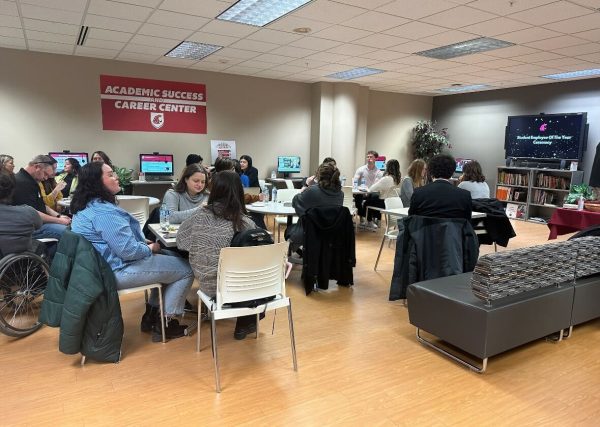A new whey for WSU
October 30, 2014
A $4 million creamery extension will assist faculty and students affiliated with the School of Food Science, as they “whey in” and learn how to make use of previously disposed whey.
“Whey is the portion of milk that is left over after making cheese,” creamery manager Russ Salvadalena said.
Salvadalena said the new extension will allow graduate and undergraduate students to gain experience producing whey and provide a space for research to be conducted.
From the milk purchased by WSU’s creamery, only ten percent of the milk can be used to make cheese, the remaining 90 percent whey.
Ferdinands, which utilizes materials from WSU’s creamery, is currently forced to waste all excess whey, however, with the introduction of the new Food Quality Building, the whey will offer the university a profitable product.
The Food Quality Building will be an extension of the current building, which is located just east of Ferdinands, and will be 40 feet tall and more than 100 feet wide. It will contain whey processing equipment which the school does not currently own.
Once the School of Food Sciences knew the changes that needed to take place, the school immediately began to plan, and has been setting aside money, which will be used for the building’s expansion.
In addition to the whey processing room, half of the space will be designated as a receiving area for raw milk.
The dairy farm owned by WSU is five miles south of Pullman. At this point in time, both of the tankers which carry the milk from the dairy farm do not fit in the small space.
This means one tanker must reside out in the parking lot near the building, where its contents are potentially exposed to the elements.
The second floor of the building offers space for students and faculty to partake in various training courses, Salvadalena noted.
Giuliana Noratto, Ph.D. in food science and technology and assistant professor at the School of Food Science, conducts research with milk and other dairy products.
Recently, she studied the proteins and polysaccharides-both found in whey- and their positive effects on an individual’s immune system.
Noratto said she is excited about the opportunities awaiting her students. She said that the new building will allow students to “relate concepts in class with practical work.”
Indira Mohanty graduated last spring and is now in her first year of her master’s degree in food science.
Her interests lie in research that focuses predominantly on food and nutrition and various methods of disease prevention.
Mohanty pointed out a fact often overlooked: the creamery (Ferdinands) provides funds not only for their workers, who are WSU students, but also the research conducted by faculty and graduate students.
Salvadalena is unsure about when the construction will begin. However, he hopes in 2016 students and faculty may begin utilizing the new space.





















